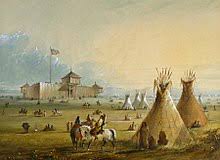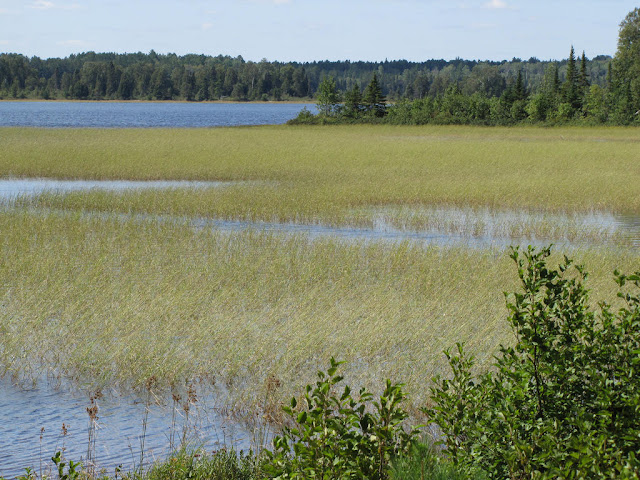Wahpekute Dakota
The Wahpekute are one of the 4 Branches of the Dakota, or Eastern Sioux. Another term for the Dakota is "Santee Sioux."
The Wahpekute were closely associated with the Mdewakantons, another branch of the Dakota Sioux. The other branches of the Dakota are the Wahpeton and the Sisseton.
By the time of Inkpaduta's birth, the Ojibwe had pushed the Sioux out of the northern Minnesota lake and wild rice country onto the more open areas in southern and southwestern Minnesota.
Broadly speaking, in settlement times, the Mdewakanton were found in the lower Minnesota River valley and around the present-day Twin Cities with the Wahpekute generally located south of the Mdewakanton. The Sisseton and Wahpeton were located in the upper Minnesota River valley and out onto the (present day) Dakota plains.
The map below of the Sioux ranges is from a little before Inkpaduta's birth when portions of the Dakota were still in Minnesota lake country. Note the Wahpekute are in south-central Minnesota around the Minnesota River.
Later, the Mdewakanton and the Wahpekute played the major role in the 1862 Dakota War in Minnesota with minor help from the Sisseton and Wahpeton.
As with many aspects of Inkpaduta's life, there is controversy over the year of Inkpaduta's birth. Various historians date his birth to either 1800 or 1815, with 1815 being the more probable date.
His father, Wamdisapa, was a war chief of a Wahpekute village led by Shakeska. His mother was either a Wahpekute or a Sisseton woman.
In his youth, he would have been taught to be a warrior and a hunter and enjoyed a life with outdoor games and sham battles.
By all accounts, Inkpaduta was not a handsome man. Somewhere along the way, he contracted smallpox as descriptions of him indicate that his face was pocked with smallpox scars. He was also described as "Squinty" due to his increasing nearsightedness.
The Sac and Fox Wars
In addition to increasing white settlement, a major feature of Inkpaduta's younger life and early manhood was war with the Sac and Fox tribes over hunting grounds in northern Iowa.
Inkpaduta earned his reputation as a successful and noted warrior during the wars with the Sac and Fox.
Below is a George Catlin painting of a battle between the Sioux and the Sac (Sauk) and Fox.
However, the Sac and Fox wars are an early example of the controversies that marked Inkpaduta's Life.
The Mark of Cain
The frontier reputation of Inkpaduta as an evil renegade starts even before his birth. The Wahpekute were viewed by white settlers as a collection of renegades and outlaws from other bands. However, this reputation is likely due to their attacks on Mississippi River boats.
Surprisingly, as late as 1998, Michael Clodfelter in The Dakota War: The United States Army Versus the Sioux, 1862-1865 branded Inkpaduta with the Mark of Cain. He writes "The source of Inkpaduta's hatred and hostility toward the fair-haired, fair-eyed interlopers rests more in his genes than in his experiences."
Clodfelter adds "What drove and sustained Inkpaduta's wrath and rage, if it is to be explained at all, was an inheritance of character, not a chain of cause and effect."
An example of how schizophrenically the historical record has treated Inkpaduta is found on the very same page in Clodfelter as the above reference to the hatred found in his genes. Clodfelter writes "Ironically, Inkpaduta's relationship with the new race on the Minnesota frontier was often better than that with his kinsmen.....he even established a close friendship with Curtis Lamb."














